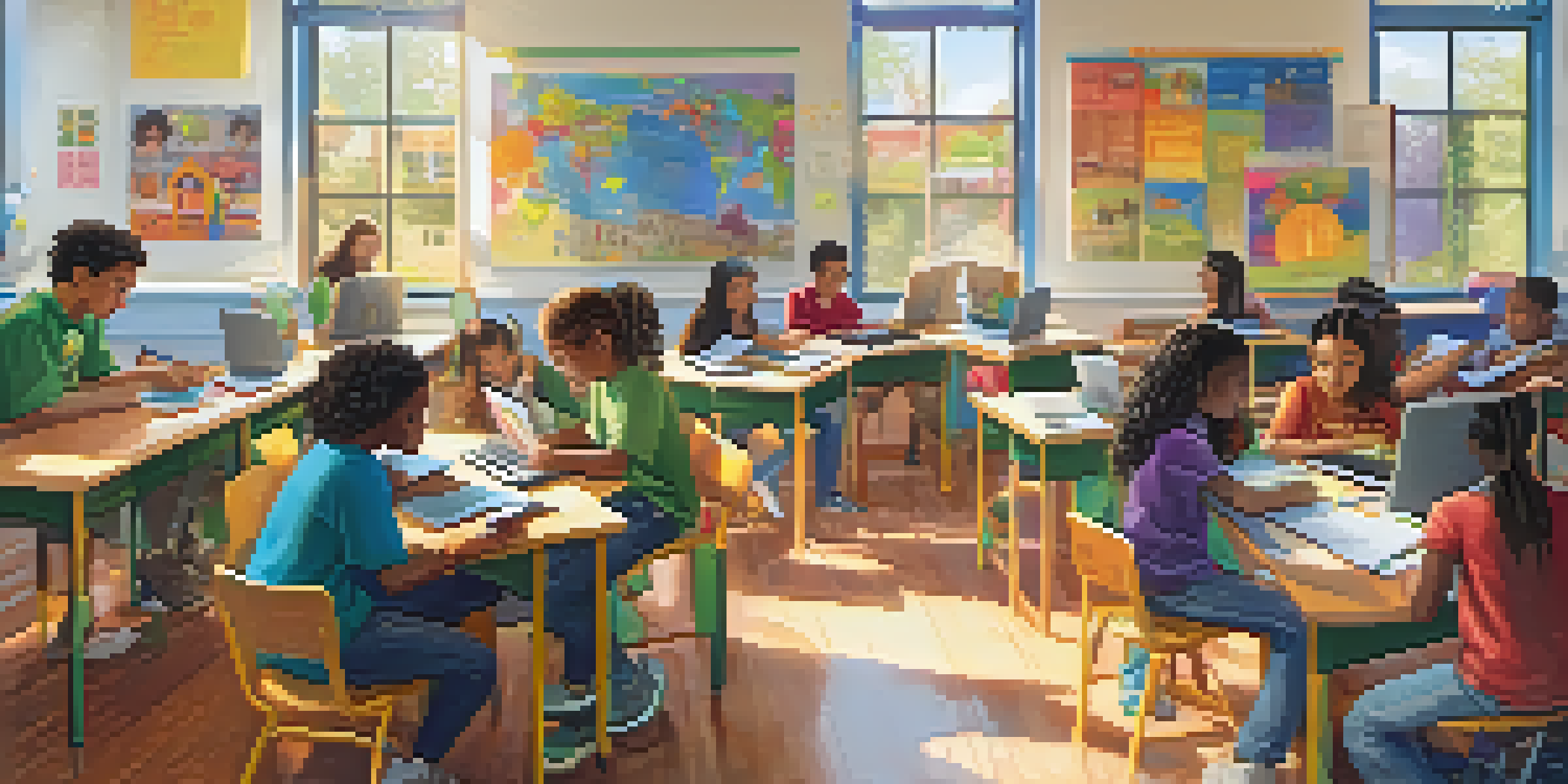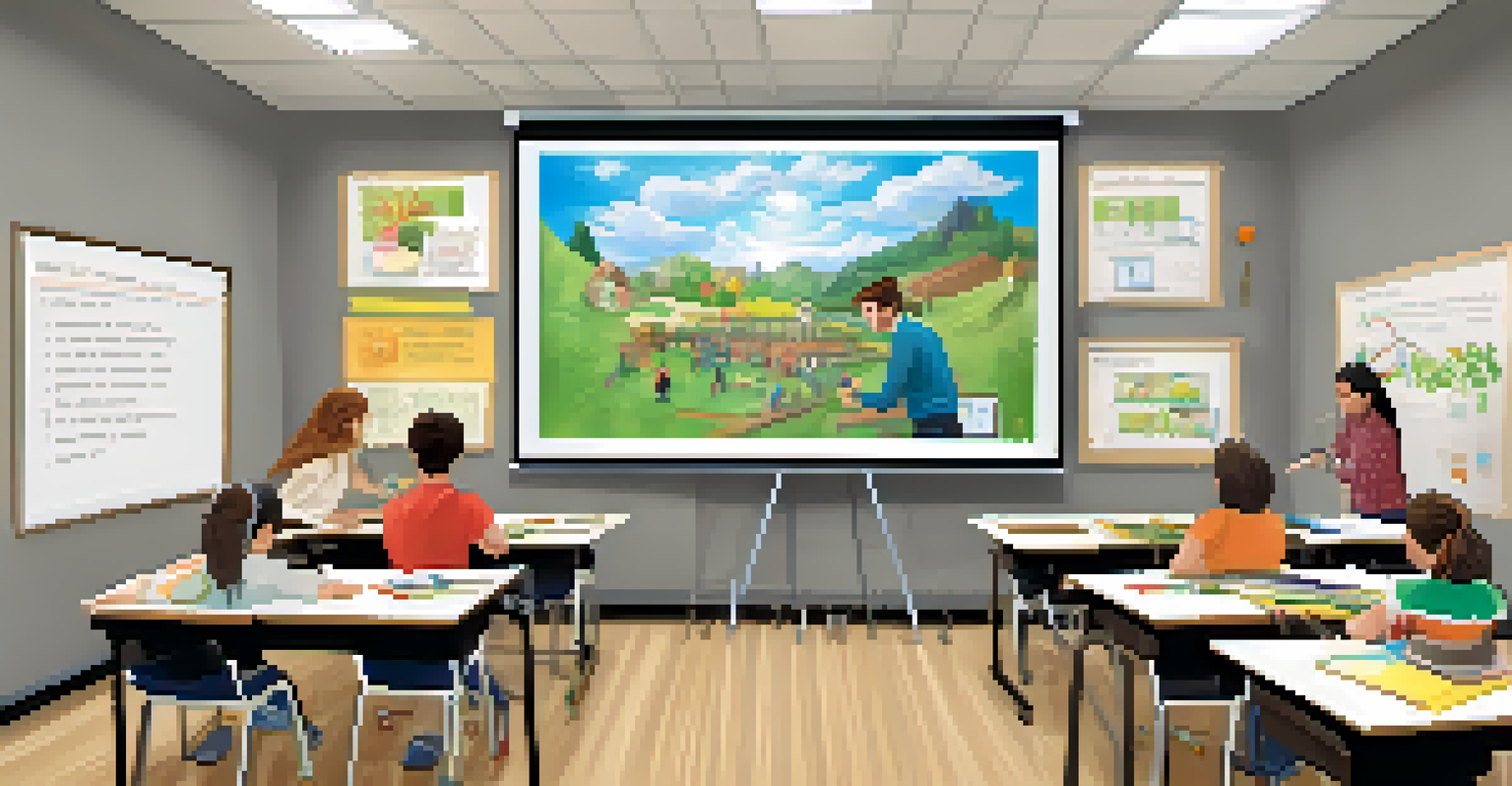Personalized Learning and the Flipped Classroom Model Explained

What is Personalized Learning and Why It Matters
Personalized learning is an educational approach that tailors learning experiences to meet individual student needs. Rather than a one-size-fits-all model, it recognizes that each student has unique learning styles, interests, and paces. This customization not only increases student engagement but also improves learning outcomes.
Personalized learning is not just a trend; it is a fundamental shift in how we approach education, focusing on the unique needs of each student.
Imagine a classroom where students choose topics that excite them, or work at their own pace to master concepts. This flexibility allows for deeper understanding and retention of information. For instance, a student who struggles with math can take extra time on specific problems, while another can advance to higher-level challenges without waiting.
Incorporating technology and data analytics, educators can track progress and adapt lessons accordingly. This dynamic approach creates a more inclusive learning environment that nurtures each student’s strengths, ultimately preparing them for success in a rapidly changing world.
Exploring the Flipped Classroom Model
The flipped classroom model flips traditional teaching methods on their head. Instead of delivering lectures in class and assigning homework later, students learn new content at home—often through video lectures—and use class time for hands-on activities and discussions. This shift transforms the classroom into an interactive learning space.

Consider this: a teacher assigns a video to watch at home about the water cycle. When students come to class, they can engage in experiments or group discussions, deepening their understanding through collaboration. This active learning approach encourages critical thinking and application of knowledge in real time.
Personalized Learning Boosts Engagement
By customizing learning experiences, personalized learning increases student engagement and improves academic outcomes.
Flipping the classroom not only enhances student engagement but also allows teachers to provide targeted support. By freeing up class time for interaction, educators can address specific challenges students face, fostering a more supportive and effective learning environment.
The Connection Between Personalized Learning and Flipped Classrooms
Personalized learning and the flipped classroom model complement each other beautifully. Both approaches focus on the learner, emphasizing engagement and mastery over rote memorization. When combined, they create a powerful educational framework that caters to diverse learning preferences.
The flipped classroom allows students to take ownership of their learning, turning passive listeners into active participants.
For instance, in a flipped classroom, students can pace their learning by watching videos and completing assignments tailored to their understanding. This allows them to come to class prepared, ready to engage in personalized discussions and activities that reinforce their unique learning paths.
Ultimately, this synergy promotes a more meaningful learning experience. By merging personalization with the interactive nature of the flipped classroom, educators can foster an environment where students feel empowered to take control of their education.
Benefits of Personalized Learning in the Classroom
The benefits of personalized learning are manifold, enhancing both student engagement and achievement. One of the most significant advantages is that students feel more invested in their education when they can explore topics of interest. This intrinsic motivation often leads to improved performance and a greater love of learning.
Additionally, personalized learning allows for immediate feedback and assessment. Educators can identify areas where students may struggle and provide targeted interventions, which can make all the difference in a student’s academic journey. For example, if a student is having difficulty with reading comprehension, a tailored intervention can help bridge that gap.
Flipped Classrooms Foster Interaction
The flipped classroom model transforms traditional teaching by encouraging active learning and collaboration during class time.
Moreover, personalized learning fosters essential skills such as self-regulation and accountability. Students learn to set goals, monitor their progress, and take ownership of their education, skills that are invaluable both in and out of the classroom.
How Flipped Classrooms Enhance Student Engagement
Flipped classrooms have been shown to significantly enhance student engagement. By shifting passive learning to the home environment, students arrive in class ready to dive into discussions and activities. This shift not only keeps students accountable but also fosters a sense of community among peers.
In a flipped classroom, students often feel more comfortable asking questions and participating in discussions. This collaborative atmosphere encourages them to share ideas and learn from each other, which can lead to deeper understanding and retention of material. Think of it as a team of detectives solving a mystery together.
Furthermore, the interactive nature of flipped classrooms allows teachers to incorporate diverse teaching methods. From group projects to hands-on experiments, students benefit from varied approaches, catering to different learning styles and preferences.
Challenges and Considerations in Implementation
While personalized learning and flipped classrooms offer numerous benefits, there are challenges to consider. For instance, not all students have equal access to technology at home, which can create disparities in learning opportunities. Educators must be mindful of these gaps and seek solutions, such as providing resources or alternative assignments.
Additionally, teachers may require training and support to implement these models effectively. Transitioning from traditional methods can be daunting, and ongoing professional development is crucial to ensure educators feel confident in their new roles. Collaboration among staff can also foster a supportive environment for innovation.
Synergy of Both Models Enhances Learning
Combining personalized learning with flipped classrooms creates a powerful educational framework that supports diverse learning preferences.
Lastly, assessing student progress in a personalized learning environment can be complex. Educators need to establish clear metrics for success and maintain open communication with students and families to track progress and adjust strategies as needed.
Future Trends in Personalized Learning and Flipped Classrooms
As education continues to evolve, personalized learning and flipped classrooms are likely to play an increasingly prominent role. With advancements in technology, tools that support individualized instruction will become more accessible, enabling educators to tailor experiences to each student’s needs seamlessly.
Moreover, the integration of Artificial Intelligence (AI) in education could further enhance personalized learning. AI can analyze student data to provide insights and recommendations, allowing teachers to focus on providing targeted support and fostering deeper connections with their students.

Ultimately, the future of education looks promising. As more educators embrace personalized learning and flipped classrooms, we can expect to see a generation of learners who are more engaged, motivated, and prepared to tackle the challenges of an ever-changing world.